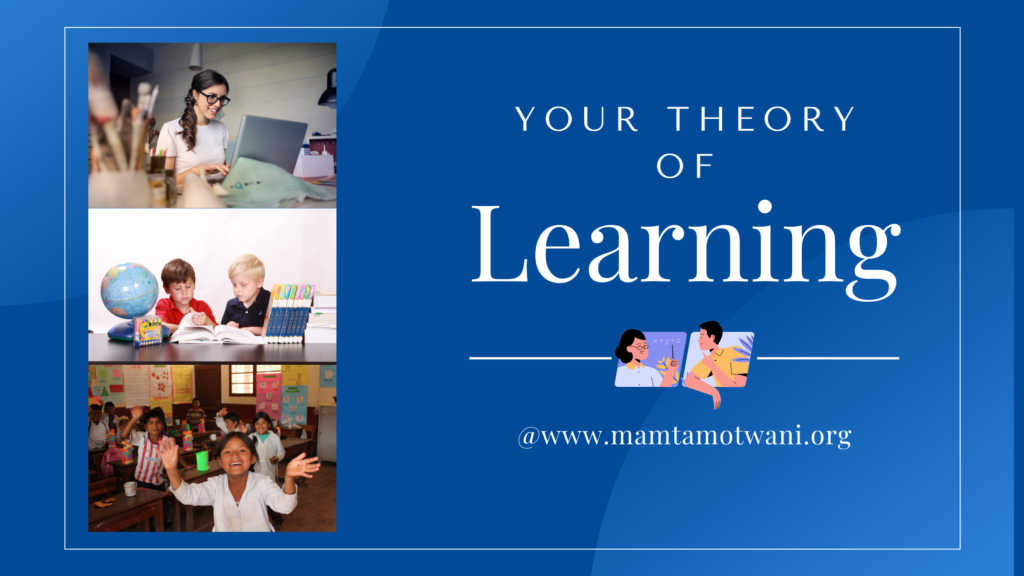
I recently did a course from HarvardX and decided to share my learnings from it. The future of learners, as well as educators, is about choice. Learners will choose what, how, and where they want to learn. Similarly, we, as educators, will choose what, where and how we want to teach.
Have we wondered as educators what our mode of learning is?
Each one of us falls into a quadrant of learning with our point of view and theory of learning.
Before we move on to the Modes of Learning, let us reflect on what is learning? Does it have a purpose or does it just happen? Is it for a living or for growing? Should learning take place as an act of freedom or an act of compulsion? What kind of learning matters? Should it be assessed or should it give way for other things? The best way to get these answers is to ask the learner.
The different Modes of Learning are Hierarchical Individual, Distributed Individual, Hierarchical Collective, and Distributed Collective.
- The Hierarchical Individual Quadrant can be best understood by a traditional school set up with a particular structure and sequence to knowledge. The student’s progress and learning are determined by tests. It is society along with the school that decides what the learner should learn.
2. The Hierarchical Collective Quadrant can be explained by our progressive schools today that do have a particular structure and levels of content, but the difference lies in the purpose of learning. The school is a micro-society within itself. The learners understand their role as citizens of the country and the world, engage in service activities, and develop a world perspective.
3. The Distributed Individual Quadrant states that Individuals are natural learners and decide for themselves what learning is meaningful to them. Learners will want to learn what adds value to them. Individuals are intrinsically motivated to learn some topics and pursue their interests. Mentor expertise, guidance, quality course content, and maximum student engagement are its key characteristics. The learner sets his own goals and determines his success.
4. The Distributed Collective Quadrant is a network of people with common interests and varying degrees of expertise who come together as a community. They choose to join or discontinue their engagement in the learning community as per their needs and flexibility. Learning here is a collective and social endeavor.
The above gist must have enabled you to identify your preferred theory of learning. Moving forward from Modes of learning to Modes of Leadership. As educators, we will have a multitude of opportunities to lead learning. Today, the opportunities for learning and leading learning are exploding. We need to make conscious choices of our career in the learning sector based on our theory of learning. Our learning theory will help us take a stance of learning and understand what kind of learners and colleagues we want to work with and the learning environment we want to work in. Different learning environments require different types of leadership. Your understanding of your theory of learning will help you decide where you fit in the distinction between schooling and learning.
Would you like to work in a stable established well-defined hierarchical organization in collaboration with the coaches, administrators, community members, and the principal?
Or
Would you like to create a structure for learners that enables them to exercise control over their learning?
Or
Would you like to form a social network of learners and inspire individuals with common interests to share the ownership of learning?
One way to answer this question would be to ask yourself the following questions
- Why do you want to teach or lead learning?
- How do you like to spend your time?’
- How do you define success?
We must have a tight fit between our learning theory and the learning environment we chose to work in. It is then that our leadership as an educator will be most effective.
After identifying my theory of learning, this is a question that I asked myself. Is it possible to remain in a school set up of the Hierarchical Collective Quadrant and yet follow my theory of learning which is of The Distributed Individual Quadrant and bring about innovation in my learning environment?
My next blog will evaluate the different innovations we can bring about in our learning sector.
Leaving you with a thought…Have you identified your theory of learning?
